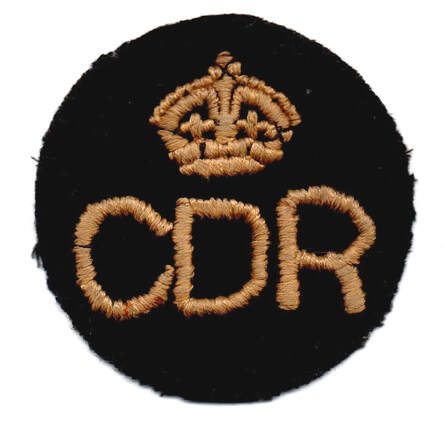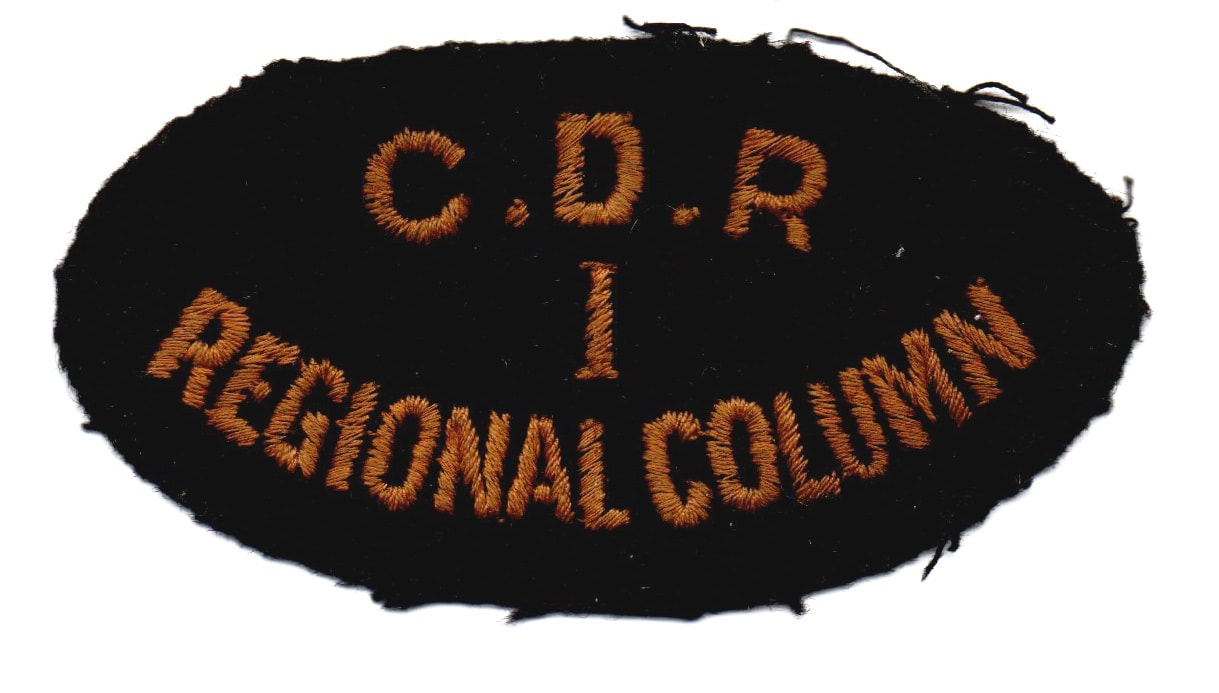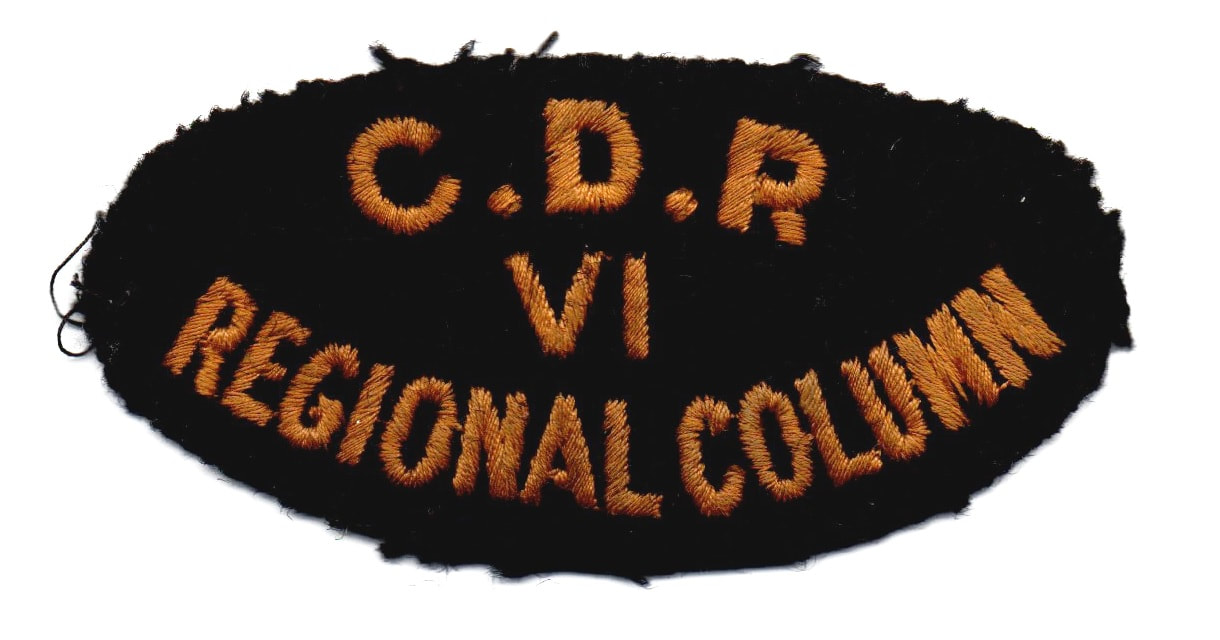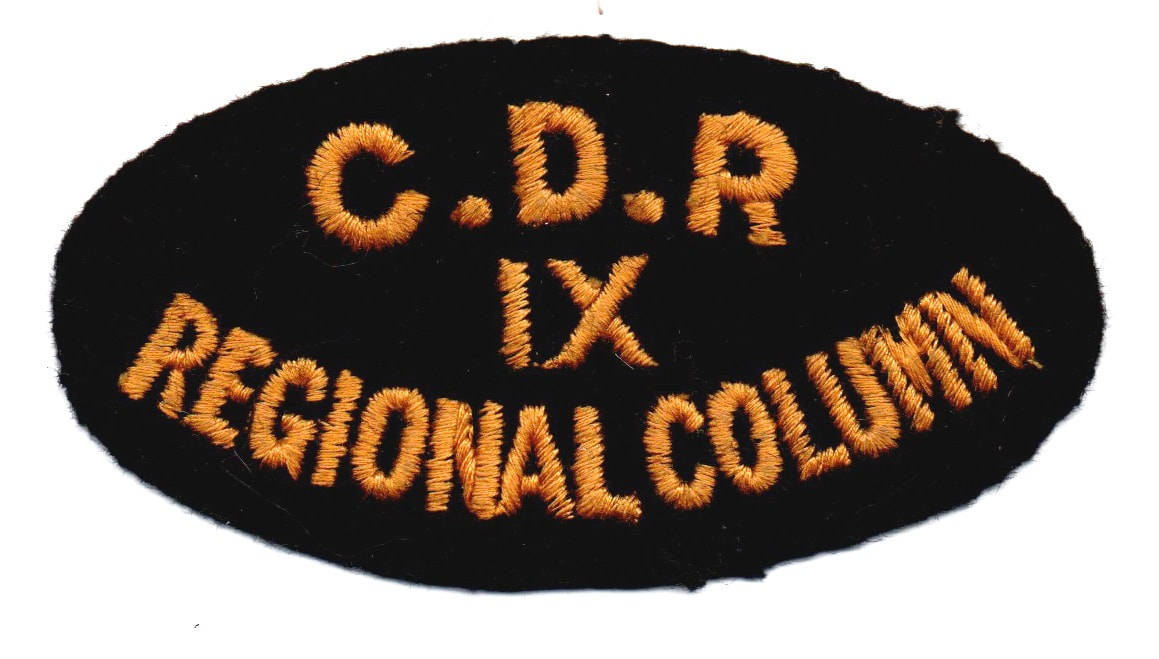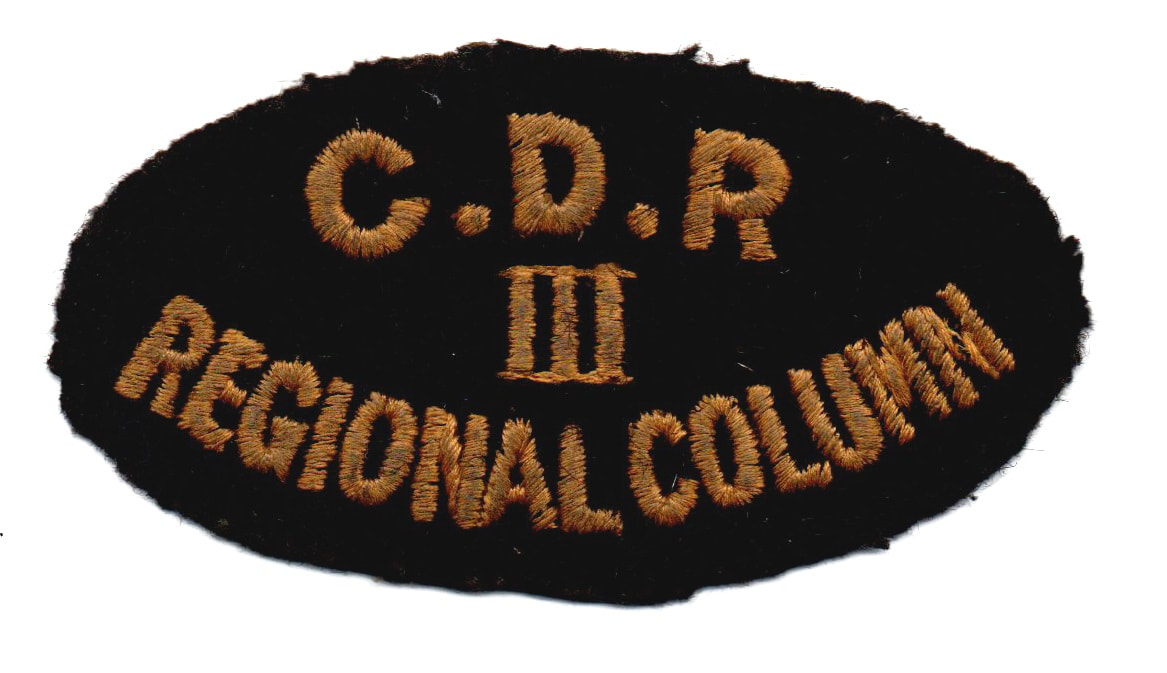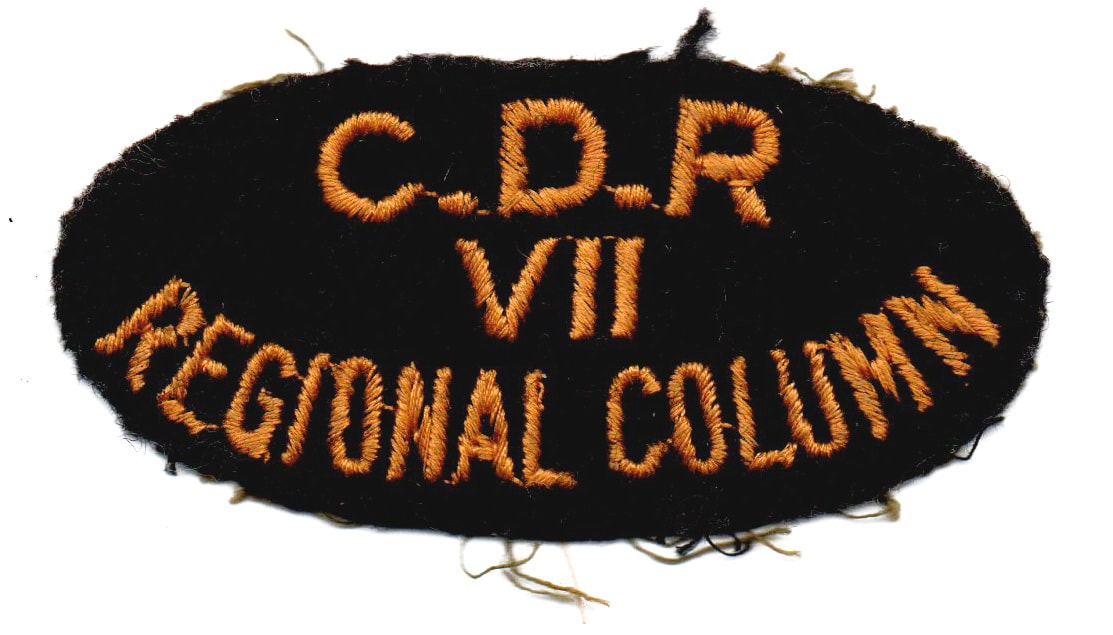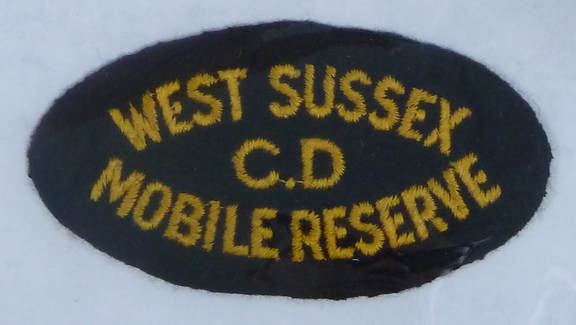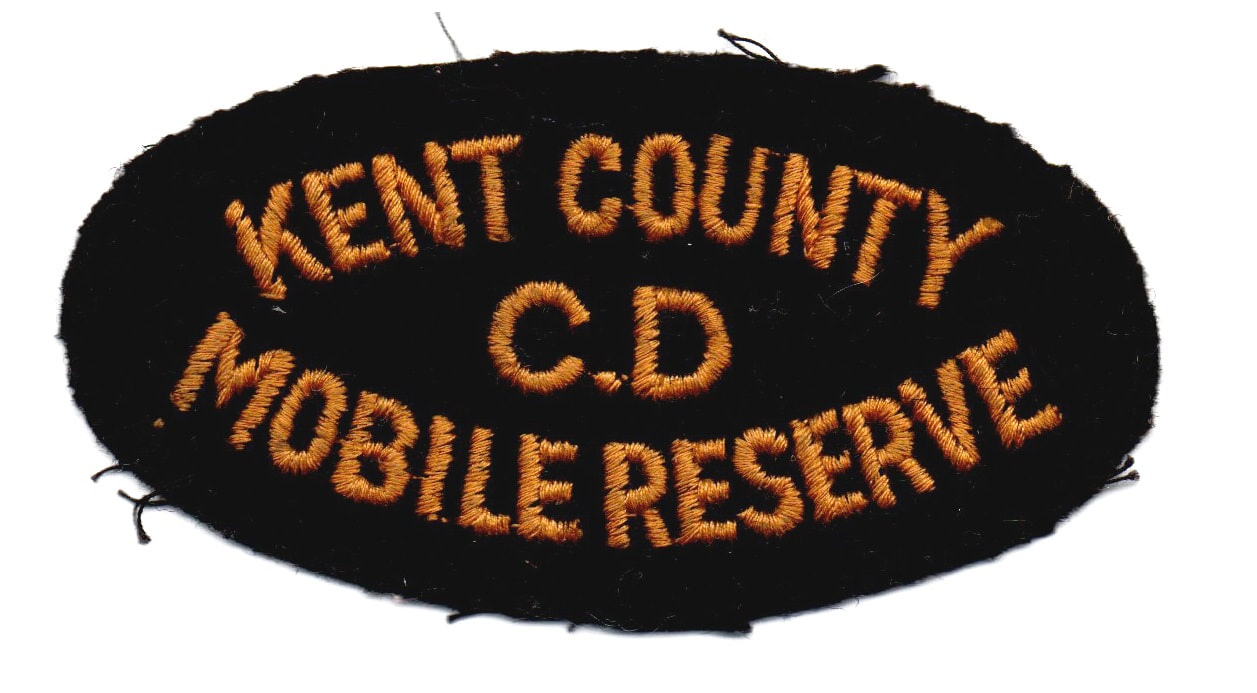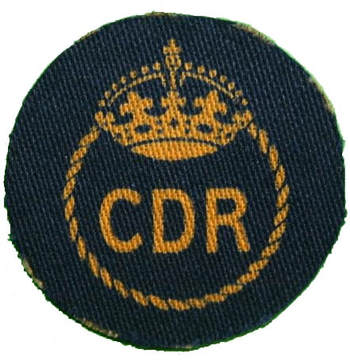Civil Defence Reserve (Mobile Reserve & Regional Columns) during WW2
The requirement for a Regional Mobile Reserve force had initially been proposed prior to the the outbreak of war by the Regional Commissioner for Tunbridge Wells (later to be designated Civil Defence Region South Eastern). This region consisted of East and West Sussex and Kent. In 1940 the Ministry of Home Security approved the need for a mobile reserve and Kent County Council devised a scheme of three companies of full-time personnel. Companies contained approximately 200 personnel (drawn from Ambulance, Decontamination, First Aid and Rescue squads) and vehicles that could quickly assist areas overwhelmed by an air raid.
As more regions followed suit, the Civil Defence Reserve Columns were formalised in July 1941 under the control of the Regional Commissioners and known as Regional Columns. A corps of senior staff were full-time but a large number of personnel were seconded to the CDR for a period of a month and rotated out.
By 1943 there were 14 such units spread across the UK. These were the 12 Civil Defence regions plus Kent and West Sussex Mobile Reserve.
As more regions followed suit, the Civil Defence Reserve Columns were formalised in July 1941 under the control of the Regional Commissioners and known as Regional Columns. A corps of senior staff were full-time but a large number of personnel were seconded to the CDR for a period of a month and rotated out.
By 1943 there were 14 such units spread across the UK. These were the 12 Civil Defence regions plus Kent and West Sussex Mobile Reserve.
|
Regional Column I (1) – Northern
Regional Column II (2) – North Eastern Regional Column III (3) – North Midland Regional Column IV (4) - Eastern Regional Column V (5) - London Regional Column VI (6) - Southern Regional Column VII (7) – South Western |
Regional Column IIX (8) - Wales
Regional Column IX (9) - Midland Regional Column X (10) – North Western Regional Column XI (11) - Scotland Regional Column XII (12) – South Eastern West Sussex Mobile Reserve Kent Mobile Reserve |
Do you have any Civil Defence Reserve badges that can be shown here? If so, please contact me.
Civil Defence Reserve Senior Ranks Shoulder Straps
|
With the Civil Defence Reserve (CDR), from late 1944, officers wore special markings on their shoulder straps to denote seniority:
Commandant - Single Crown Deputy Commandant - Three Stars Adjutant/Quartermaster - Three Stars Senior Group Officer - Two Stars Group Officer - One Star |
Civil Defence Reserve Breast Badge
A private purchase or homemade "CDR" (Civil Defence Reserve) breast badge for the battledress jacket.
Kent County Civil Defence Reserve Breast Badge
This would appear to be an unofficial breast badge manufactured for the First Company of Kent CC Mobile Reserve.
Civil Defence Reserve Shoulder Titles
A number of shoulder titles were manufactured for mobile reserve and regional columns. There is photographic evidence of these badges also being worn on the right breast pocket.
Civil Defence Reserve Arabic Numeral Tab Badges
Each region's Civil Defence Reserve column (except for regions 4, 11 and 12 that only had one unit) was split into several different units (located at different locations within the region). Each unit was issued a number (often called a tab) and these were worn below the CDR Regional Column shoulder title. These tabs were introduced midway through 1943. West Sussex only had a single unit so no tabs were issued to them. Kent had three units (or companies) and did issue the tabs to the units.
For example Region X (10) North West England had seven units as follows:
Unit 1 - Abbot Hall (Kendal)
Unit 2 - White Hall
Unit 3 - Sherdley Hall (St. Helens)
Unit 4 - Crompton Fold (Oldham)
Unit 5 - Northenden (Manchester)
Unit 6 - Kirkby (Knowsley)
Unit 7 - Accrington
The below First Aid Party member was in "Unit 4, North Western Regional Column, Civil Defence reserve".
For example Region X (10) North West England had seven units as follows:
Unit 1 - Abbot Hall (Kendal)
Unit 2 - White Hall
Unit 3 - Sherdley Hall (St. Helens)
Unit 4 - Crompton Fold (Oldham)
Unit 5 - Northenden (Manchester)
Unit 6 - Kirkby (Knowsley)
Unit 7 - Accrington
The below First Aid Party member was in "Unit 4, North Western Regional Column, Civil Defence reserve".
Civil Defence Reserve Beret Badge
Civil Defence Reserve Coloured Lanyards
Within the Southern Region's Unit 1 (at Steventon Manor) the use of coloured lanyards to differentiate different units was adopted. These were not officially sanctioned by the Ministry of Home Security. Some other areas also adopted the lanyards but they were never an official part of the Civil Defence Reserve uniform.
Civil Defence Reserve Overseas Column
In December 1944 a request was made to the Civil Defence Services for a volunteer column to assist with V1 and V2 incidents in Antwerp, Belgium. Although the city had been liberated in the autumn of 1944, is was a regular target for German V-weapons. The newly created Civil Defence Reserve Overseas Column arrived in Belgium in early January and then began to assist the local Belgian forces. During their time there they sadly lost one member of their corps whilst trying to rescue civilians in a bombed building. Uniquely amongst Civil Defence personnel, members of the Overseas Column were also allowed to where the flash of the 21st Army Group - a red shield with blue cross. The Overseas Column returned to the UK in May 1945.
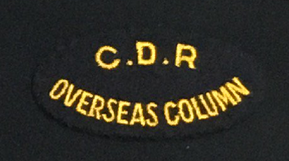
Civil Defence Reserve Overseas Column shoulder title
Specially trained Civil Defence workers form a convoy of vehicles including utility vans, ambulances and cleansing vehicles which rush to the scene of a blitz attack to provide aid. The workers remain on this special force for no more than four weeks after which they return to their normal depot.

